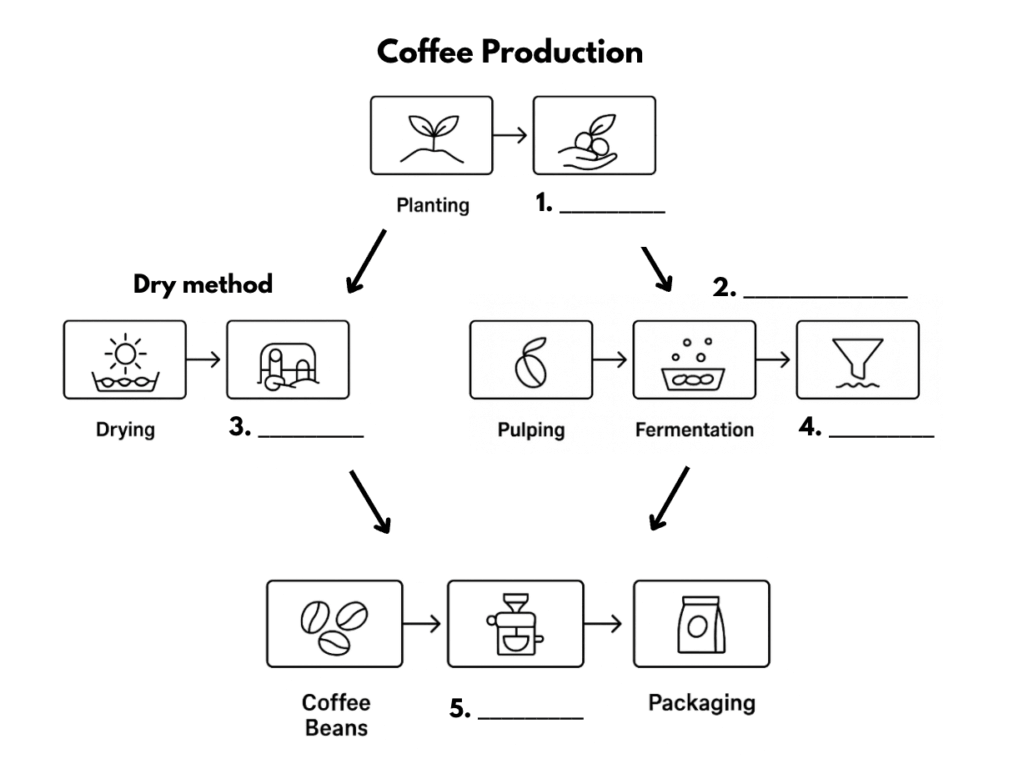Do you struggle with diagram labelling on IELTS listening?
This is one of the trickier question types.
Today you’ll learn strategies to improve your Listening score.
We’ll also provide Part 2 practice questions with audio.
Today’s question
I have been listening to your podcast for 1 month! I like it, you guys are so amazing. Very fascinating!
I have one question for you please. How can I work on my listening!
Do you have any ideas? And what if you make an episode talking about that?
–Sergo Valentin
First, you need to listen to a lot of English!
- Podcasts
- TV shows
- Audiobooks
You must also learn strategies and practice them!
For each question type on the IELTS Listening exam, you need different strategies.
Today we’ll focus on the strategies for diagram labeling.
What is diagram labelling?
For these questions, you will complete labels on a diagram as described in an audio recording.
Diagram and map labelling questions are most common in Section 2 of the IELTS Listening test.
This section features a monologue.
You will listen to a recording of one voice, often a description of a place or process.
You then use the information to label a diagram, map, or plan.
Step 1: Read the Instructions
Note how many words and/or numbers are allowed.
The instructions will say something like:
NO MORE THAN THREE WORDS AND/OR A NUMBER.
Your answer will be marked incorrect if you include more than the allowed word count.
Step 2: Read the Information given in the diagram
Read the labels and other information given in the diagram.
Underline the keywords so you can listen for this information and track locations or steps.
This opens your brain box so you’re ready to identify the appropriate information in the audio recording.
Step 3: Pay attention to direction or process words
For a map, you may see the following:
- Above
- Below
- On the left
- On the right
For a process, you may see:
- Then
- Next
- After this
- Before ____
Step 4: Be ready to listen for synonyms/paraphrases
You won’t always hear the exact words from the diagram in the audio or see it in the questions.
Synonyms and paraphrasing will be used in order to challenge your vocabulary knowledge and IELTS listening skills.
IELTS Listening Part 2 practice:
Instructions: Label the diagram below. Write NO MORE THAN THREE WORDS for each answer.

What to do before listening
Before hearing the audio, you will have 30 seconds to look at the diagram.
Make predictions about what you will hear.
Notice that many of the steps end in “-ing” so plan to listen for other “-ing” words.
What to do while listening
Remember that part 2 is a monologue.
It can be easy to let your mind water.
Listen for key words and refer back to the diagram to stay focused.
If you lose track or find your mind has wandered, don’t panic.
Listen for key words that will get you back on track.
Transcription of audio for practice questions
Listen to the following audio in the podcast episode:
Good morning, everyone. Today I’ll be explaining the process of coffee production, from the early stages of planting to the final packaging. Coffee is one of the most widely consumed beverages in the world, and understanding its production helps us appreciate the complex work behind every cup.
The process begins with planting the coffee seeds, usually in shaded nurseries. The seeds are kept in rich soil and watered regularly until they sprout into young plants. Once they’re strong enough, they’re transferred to open fields where they can grow for several years. Coffee trees typically take around three to four years to bear their first fruit, known as coffee cherries.
When the cherries are ripe, usually bright red in color, they are harvested, either by hand or machine. In many traditional coffee-growing regions, hand-picking is still preferred to ensure that only the ripest cherries are collected. After harvesting, the next crucial stage is processing. There are two main methods: the dry method, where cherries are laid out in the sun to dry, followed by threshing, which removes the dried outer layers from the coffee bean. Another alternative, the wet method, involves pulping the fruit to extract the beans before fermentation and washing.
Once the beans are processed and dried, they are roasted in large rotating drums at temperatures of about 200 degrees Celsius. The roasting time depends on the desired flavor – lighter roasts are more acidic, while darker roasts have a stronger, more bitter taste. After roasting, the beans are ground to a specific texture suitable for brewing.
Finally, once the coffee is prepared for sale, it is packaged, either as whole beans or ground coffee, and sealed to preserve freshness before being distributed to retailers worldwide.
Answer key
After listening to the audio and completing the diagram, check your answers here.
1. Harvesting
2. Wet method
3. Threshing
4. Washing
5. Grinding
If you are wondering why the first answer was not “cherries,” note that the answers need to match the other labels in the diagram.
Because the first label is “planting” instead of “plants” or “seeds,” the first answer will also be a verb+ing label.
If you are wondering why the first answer isn’t “plant seeds,” note that the grammar has to match.
If the label in the diagram is verb+ing, the other labels will likely not be bare infinitives.
Takeaway
It is vital that you are taking in a lot of English to improve listening fluency.
However, it’s not enough to just listen to English to get a high IELTS listening score.
You must know strategies and you have to practice them.
For all the strategies you need for every part of the exam, sign up for 3 Keys IELTS.








